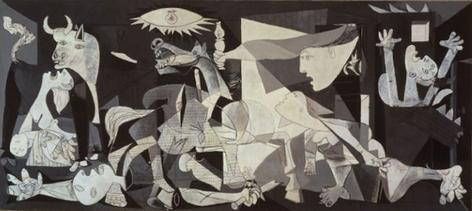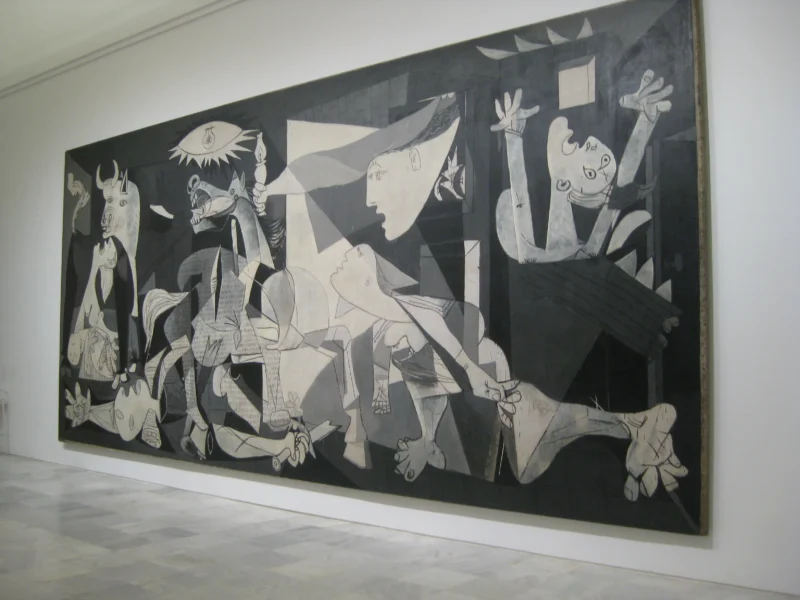The 20th century was a time of immense transformation in the realm of art, marked by radical departures from tradition and the birth of new movements that reshaped our understanding of creativity. Among the many masterpieces created during this period, Pablo Picasso’s “Guernica” (1937) stands out as the most significant piece of art, embodying not only the spirit of the time but also the universal human experience of suffering, resilience, and the fight against oppression.
The Context of “Guernica”
Created during the tumultuous era of the Spanish Civil War, “Guernica” was Picasso’s response to the horrific bombing of the Basque town of Guernica by Nazi German and Italian Fascist forces at the request of the Spanish Nationalists. On April 26, 1937, the city was brutally bombarded, resulting in widespread devastation and the loss of innocent lives. The attack was one of the first aerial bombings targeting civilians, marking a chilling moment in modern warfare.
Picasso, deeply affected by the tragedy, set out to create a work that would capture the pain and anguish of the event. Commissioned by the Spanish Republican government for the 1937 World’s Fair in Paris, “Guernica” was intended to bring global attention to the atrocities occurring in Spain.
The Composition and Symbolism
“Guernica” is a monumental work, spanning 11 feet in height and 25.6 feet in width. Rendered in stark black, white, and gray, the painting’s color scheme emphasizes the bleakness and despair of the scene. The composition is chaotic, filled with distorted, fragmented figures that convey the terror and violence of the bombing.
At the center of the painting is a horse, writhing in agony, symbolizing the people’s suffering. To the left, a woman screams in grief, holding her dead child—a haunting depiction of the loss of innocent life. On the right, a figure falls, engulfed in flames, while another reaches out in desperation. A bull, often interpreted as a symbol of brutality or, conversely, as a symbol of hope, looms over the scene, adding to the painting’s complex layers of meaning.
The imagery in “Guernica” is deliberately ambiguous, allowing for multiple interpretations. Picasso’s use of Cubism—a style he helped pioneer—further enhances the sense of fragmentation and chaos, reflecting the disintegration of society in the face of war.
The Impact and Legacy
“Guernica” is not only a masterpiece of modern art but also a powerful political statement. It transcends the specific event it depicts, becoming a universal symbol of the horrors of war and the suffering it inflicts on humanity. The painting’s stark portrayal of pain and despair has resonated with audiences worldwide, making it an enduring icon of anti-war sentiment.
Throughout the 20th century and beyond, “Guernica” has been a source of inspiration for artists, activists, and intellectuals. Its influence extends beyond the art world, contributing to discussions on war, peace, and human rights. The painting has been exhibited in numerous countries, and reproductions have appeared in countless protests and peace movements, reinforcing its status as a global symbol of resistance against oppression.
Conclusion
Pablo Picasso’s “Guernica” is more than just a painting; it is a profound expression of the human condition in the face of violence and suffering. Its significance lies not only in its artistic innovation but also in its ability to convey the universal themes of pain, loss, and resilience. As the most significant piece of art of the 20th century, “Guernica” continues to challenge, inspire, and remind us of the enduring power of art to reflect and shape our understanding of the world.
The article contains sponsored affiliate links from Amazon to valuable resources.


